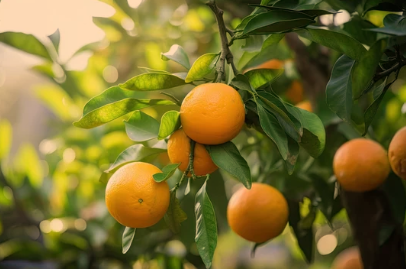Tangerines, with their vibrant color, refreshing taste, and fragrant aroma, have enchanted fruit enthusiasts around the world.
Curiosity often arises as we indulge in the juicy sweetness of a tangerine—where exactly do these delightful citrus fruits come from?
In this article, we embark on a captivating journey to unravel the origins of tangerines and delve into the diverse regions where they thrive.
From ancient beginnings to their global presence today, we unveil the secrets behind the cultivation of these tantalizing fruits.
Origins of Tangerines

Tangerines trace their roots back to the lush lands of Southeast Asia, specifically in the regions of China and Vietnam.
These ancient civilizations recognized the unique attributes of wild citrus varieties and undertook selective breeding to develop the distinct traits that define tangerines today.
Through careful cultivation practices, they unlocked a fruit with vibrant color, easy peeling, and a delightful balance of sweetness and acidity that sets tangerines apart from other citrus fruits.
Spread of Tangerines
The story of tangerines intertwines with the historical trade routes and exploration that have shaped our world.
Beginning in the 10th century, Arab traders played a pivotal role in spreading tangerines from Asia to the Mediterranean region.
These intrepid traders carried the seeds of these captivating fruits, introducing them to new lands and cultures.
The alluring taste and vibrant appearance of tangerines quickly captivated the palates of people along the trade routes, fueling their popularity and igniting a global fascination with the fruit.
Tangerine Cultivation Regions

Mediterranean Marvels:
The Mediterranean region has long been hailed as a hub for tangerine production, boasting countries such as Spain, Italy, and Morocco as primary cultivators.
The temperate climate, characterized by mild winters and warm summers, creates an ideal environment for tangerine trees to flourish.
The region’s fertile soils, enriched by the Mediterranean Sea, impart a distinctive flavor and quality to the fruit.
Spain, specifically the regions of Valencia and Murcia, has garnered international acclaim for its exquisite tangerines, with the Valencian clementine being a sought-after variety.
The United States’ Citrus Belt:
Tangerine cultivation in the United States is concentrated in the states that make up the renowned “Citrus Belt.”
Florida, with its subtropical climate, leads the nation’s tangerine production.
The Sunshine State’s balmy weather, abundant rainfall, and sandy, well-drained soils create an optimal setting for tangerine orchards.
California, known for its diverse microclimates, cultivates an array of tangerine varieties, with regions like the San Joaquin Valley and Central Valley making significant contributions. Texas, with its mild winters and ample sunshine, also plays a role in the nation’s tangerine harvest.
Global Tangerine Pioneers:
Beyond the Mediterranean and the United States, other countries have embraced tangerine cultivation with notable success.
Brazil, blessed with a tropical climate, boasts significant tangerine production in regions such as São Paulo and Minas Gerais.
The Brazilian tangerine market offers diverse varieties, including the highly regarded Ponkan. China, the birthplace of tangerines, showcases a rich heritage of citrus cultivation.
Provinces like Jiangxi and Fujian are renowned for their tangerine orchards, where careful cultivation practices are passed down through generations.
Japan, known for its meticulous attention to detail, produces premium tangerines in regions like Ehime Prefecture, where careful nurturing and strict quality standards yield exceptional fruits.
Conclusion
Tangerines, with their tantalizing flavor and vibrant appearance, have mesmerized fruit lovers across the globe.
Emerging from Southeast Asia, tangerines have traversed trade routes and continents, captivating the palates of civilizations through centuries of exploration and commerce.
Today, the Mediterranean, the United States’ Citrus Belt, and countries like Brazil, China, and Japan continue the legacy of tangerine cultivation, each region embracing its unique climate and agricultural expertise.
As you savor the succulent juiciness of a tangerine, appreciate the ancient origins and the dedication of growers worldwide who nurture these citrus treasures, ensuring their delightful presence in our lives.




